Caret Studio installs gridded social-distancing system inside Italian plaza
Italian practice Caret Studio has installed the StoDistante installation in an Italian square to encourage social-distancing as a temporary solution for reactivating public spaces after Covid-19 lockdown ends. The StoDistante installation, which sees the plaza floors painted with white squares in a grid-like format, has been implemented in Piazza Giotto – a plaza located in the town of The post Caret Studio installs gridded social-distancing system inside Italian plaza appeared first on Dezeen.

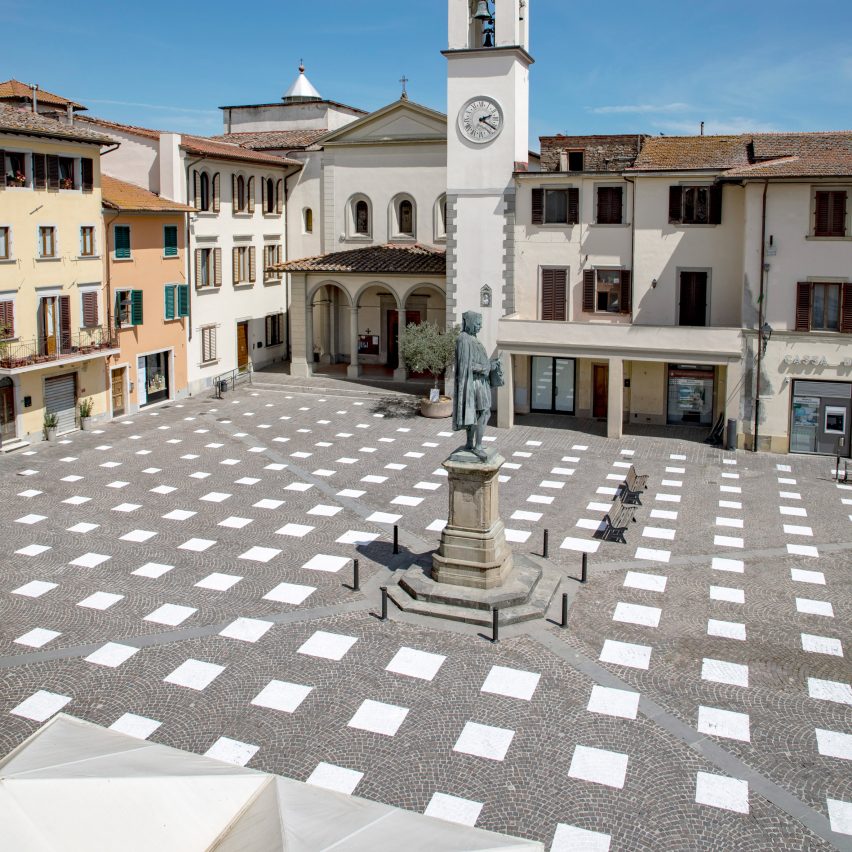
Italian practice Caret Studio has installed the StoDistante installation in an Italian square to encourage social-distancing as a temporary solution for reactivating public spaces after Covid-19 lockdown ends.
The StoDistante installation, which sees the plaza floors painted with white squares in a grid-like format, has been implemented in Piazza Giotto – a plaza located in the town of Vicchio near Florence, Italy.
White, square markers act as visual representations of the distance people should keep from each other in order to slow the spread of the Covid-19 virus.
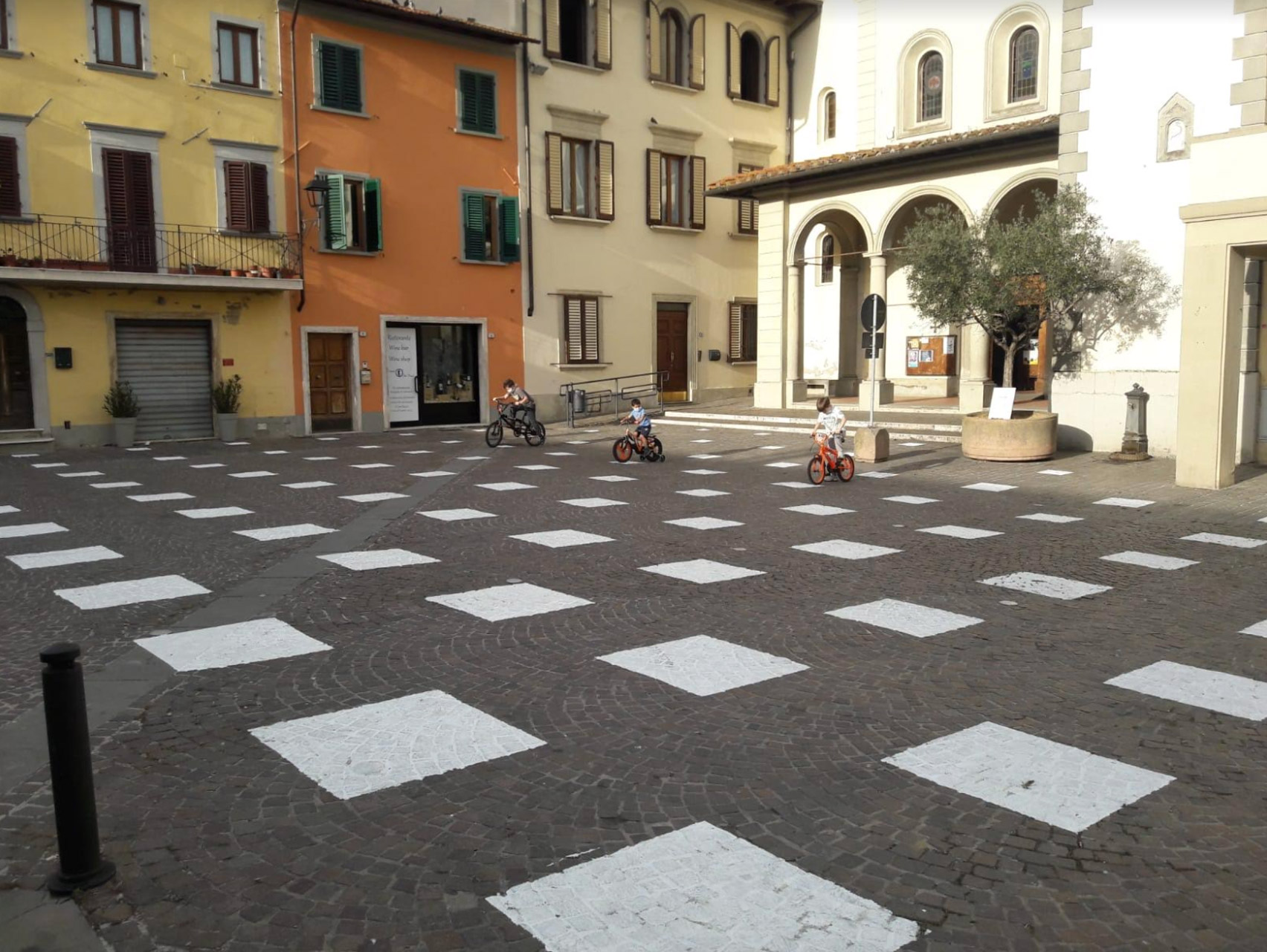
The installation is based on a social distancing guideline established by the region of Tuscany, which sets the minimum safe distance to be maintained between people as 1.8 metres in order to limit the spread of the virus.
The white squares are made from removable paint, and have been added to the cobblestone floor of the public area in a lattice-like layout to act as a marker of how people can safely navigate around the square.
When the pandemic is over, the water-resistant paint can be easily removed, and the square can revert back to its original configuration.
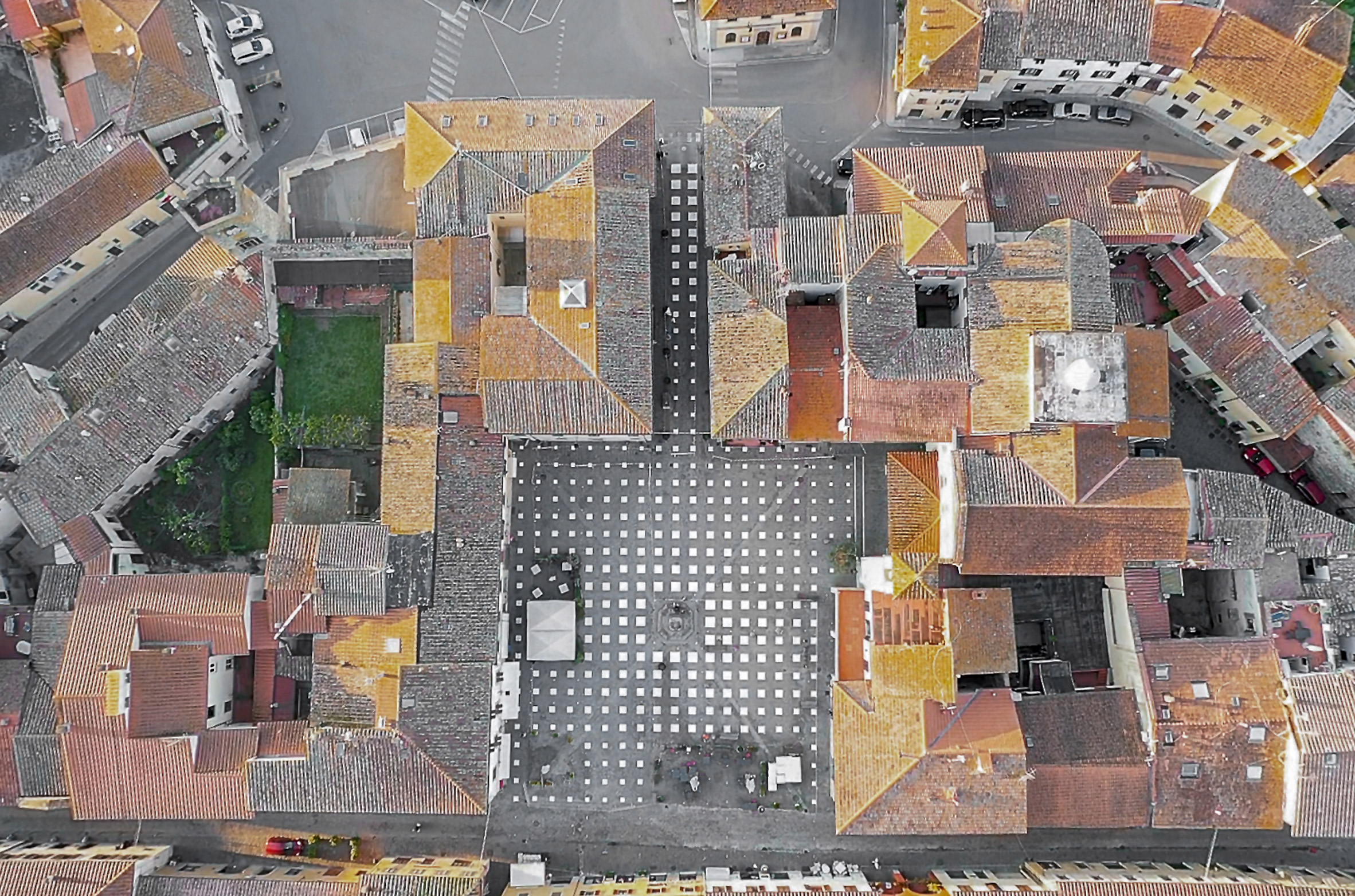
Matteo Chelazzi, Federico Cheloni and Giulio Margheri, who founded Caret Studio in 2014, describe the installation as a temporary solution for "conscious use" of the public space under the country's current safety measures.
"During these weeks of quarantine, social distancing and its implications have been a very actual topic, and has made us reconsider some of our routines and the way we use the space," the designers told Dezeen.
"StoDistante is a reflection on the new forms of social distancing imposed during the spread of the Covid-19 emergency," they added.
"[The installation] is conceived as a platform for citizens to reclaim and reactivate open spaces through the hosting of a series of initiatives as rules are relaxed in the coming weeks."
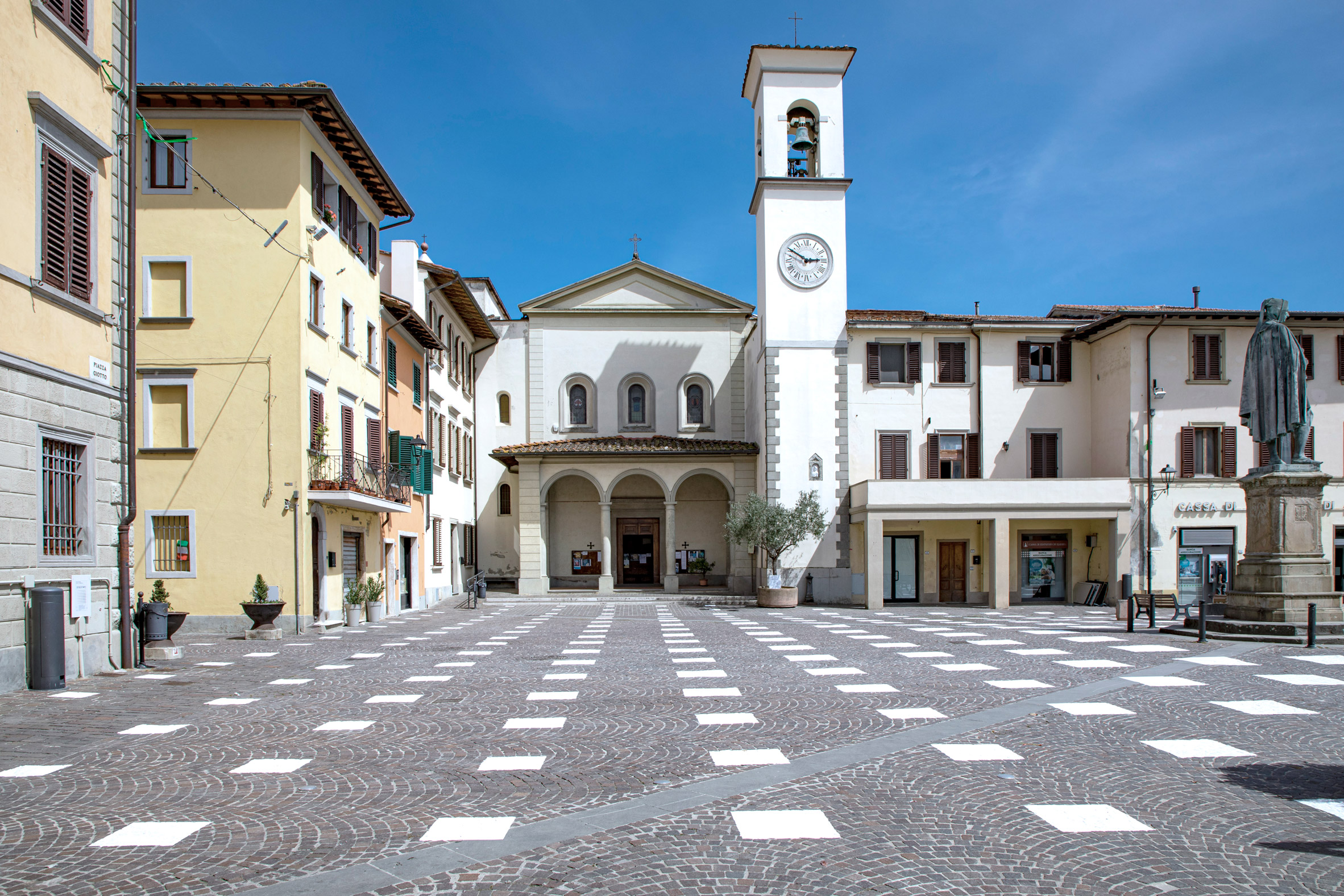
Arranged in a gridded formation, the squares get larger the closer to the centre they are. This "gradient" style is designed to offer different perspectives and interactions within the piazza.
"The idea is to create a temporary infrastructure for a new social life, becoming an opportunity to reflect on the use of public spaces during these times."
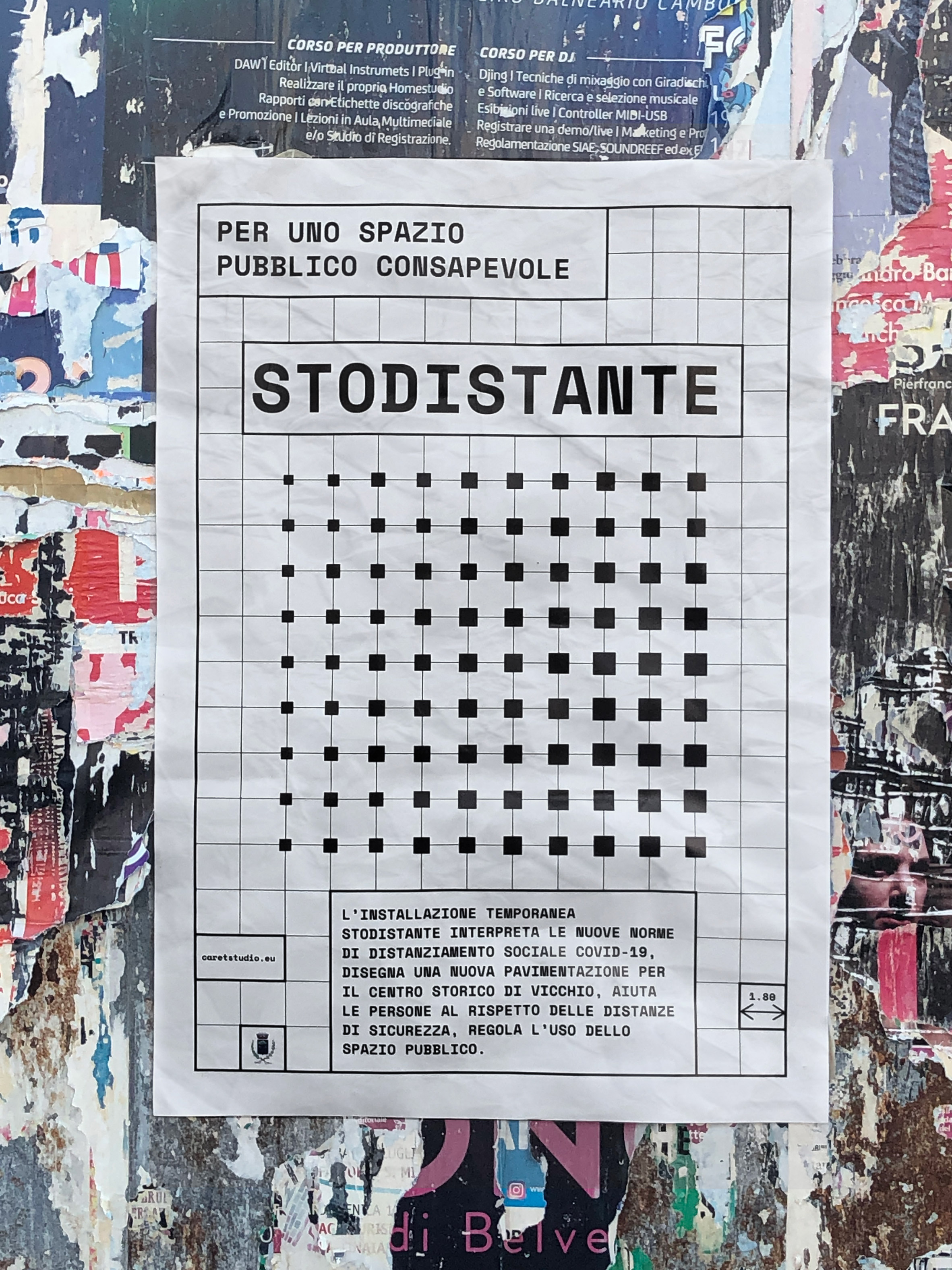
Gatherings are still banned in Italy until 18 May, however some people and children have been using the installation for the past few days to move across the square.
According to the designers, as safety rules continue to be relaxed in the coming weeks there are plans for the community to use StoDistante for other purposes too, such as an open-air cinema, a gym or for church services.
While Stodistante has been applied for the first time in Vicchio, Caret Studio hope it can be installed in other public areas in different towns and cities.
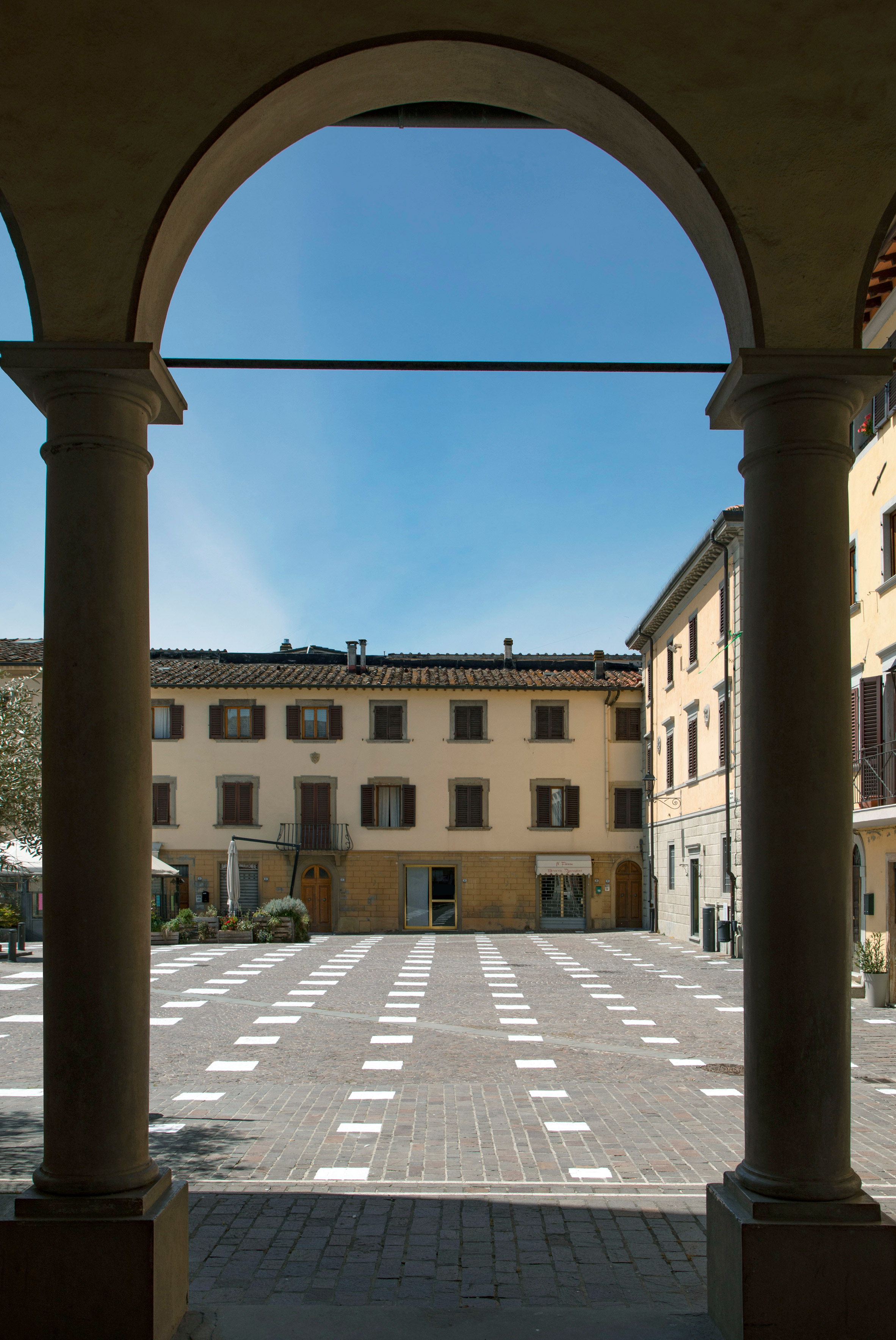
Many designers have been focusing their efforts towards creating concepts that would make life after lockdown safer.
Design studio SBGA Blengini Ghirardelli designed a concept for colourful fibreglass rods that would snap together to form a circle on the ground of parks for up to two people to sit inside, while Paul Cocksedge created a social distancing picnic blanket.
The Commune di Milano is also asking architects and designers to devise social-distancing devices such as spacers to keep people apart, signs to remind people to distance, and layouts for indoor and outdoor spaces to enable the city's shops and public spaces to safely reopen.
The post Caret Studio installs gridded social-distancing system inside Italian plaza appeared first on Dezeen.
